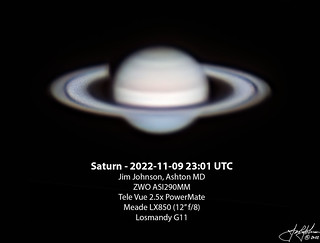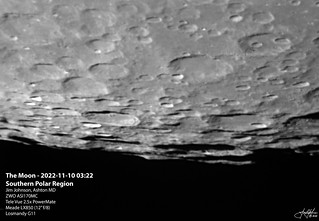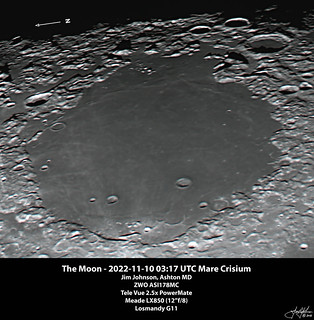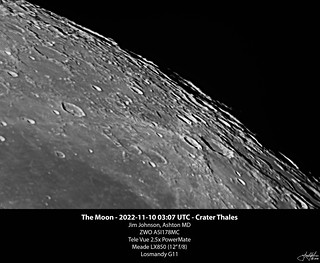Seeing the forecast for decent sky conditions tonight, I decided that it would be a good to work on Firecapture autogiding before the weather turns any colder. I checked Stellarium to see what imaging opportunities were available. Above average seeing, tolerable weather that I bundled up for, great luck with Firecapture autoguiding, and interesting aspects of the targets made of a great night. And, I had an epiphany.
My plan:
- Saturn: an early target for trials.
- Jupiter: Capture a time lapse of Europa (and shadow) and Ganymede crossing the face from the time it cleared the trees and all the way to the meridian.
- Moon: can only guide on planets, so manually guide for lunar captures and shoot whatever looks interesting.
- Mars: Not much to see, but may as well get a capture
At midafternoon I completed the setup that I started yesterday. This consisted of putting the Meade on the G11, and adding the ASI290 to it. No issues encountered. I also did an initial check of Firecapture autoguide after adding a powered USB hub and a crossover cable to my setup. I tested the connection to the laptop, and it worked the first time.
Temperature for the nighttime activities was upper 40s at the start, but it had dropped to 41 degrees by the end. There was an occasional gentle breeze. There was no dew on any surfaces throughout the night.
I went out at 1730 to polar align. No issues. I stepped right into trying autoguiding on a single RGB run on Saturn. That worked well, so I shot an RGB run at 60s per filter. Saturn has gotten notably smaller. I think that I am done shooting it for the season.
Next I moved to Jupiter. I first shot a single RGB run with the ASi290 at 45s per filter. Then I changed to the ASI178 for a time-lapse capture. The reason I changed to this camera is for ease of processing a time-lapse, and fine detail is not as important for a time-lapse animation. After setting up autoguiding and the capture, I went back inside. Going back inside was part of epiphany.
I transitioned to the Moon. This was the first time that I had used the ASI178 with the 2.5x PowerMate. I shot several 4000 frame runs, and was quickly consuming my available storage, so I gave that up to save room for Mars.
I think that I shot one run of Mars with the ASI178, then I transitioned to the ASI190 for RGB runs.
I was using the GM8 handcontroller and cable, and the hand controller started locking up on me when it started getting cold. I was able to use the ASCOM controller on the laptop just fine.
Here’s the epiphany that occurred as walked back to the house with Firecapture autoguiding on Jupiter: If the laptop works better than the min-computer for DSO and planetary imaging, why not add Win11 Pro, leave it at the scope, and remote into it from the house? I would also have a computer with a display available at the scope if needed when I occasionally walk out to check on things. Makes perfect sense, so I am going to try it.










Using the small laptop for my scope-side computer, and remoting into it from the house is now my planetary and DSO imaging platform.